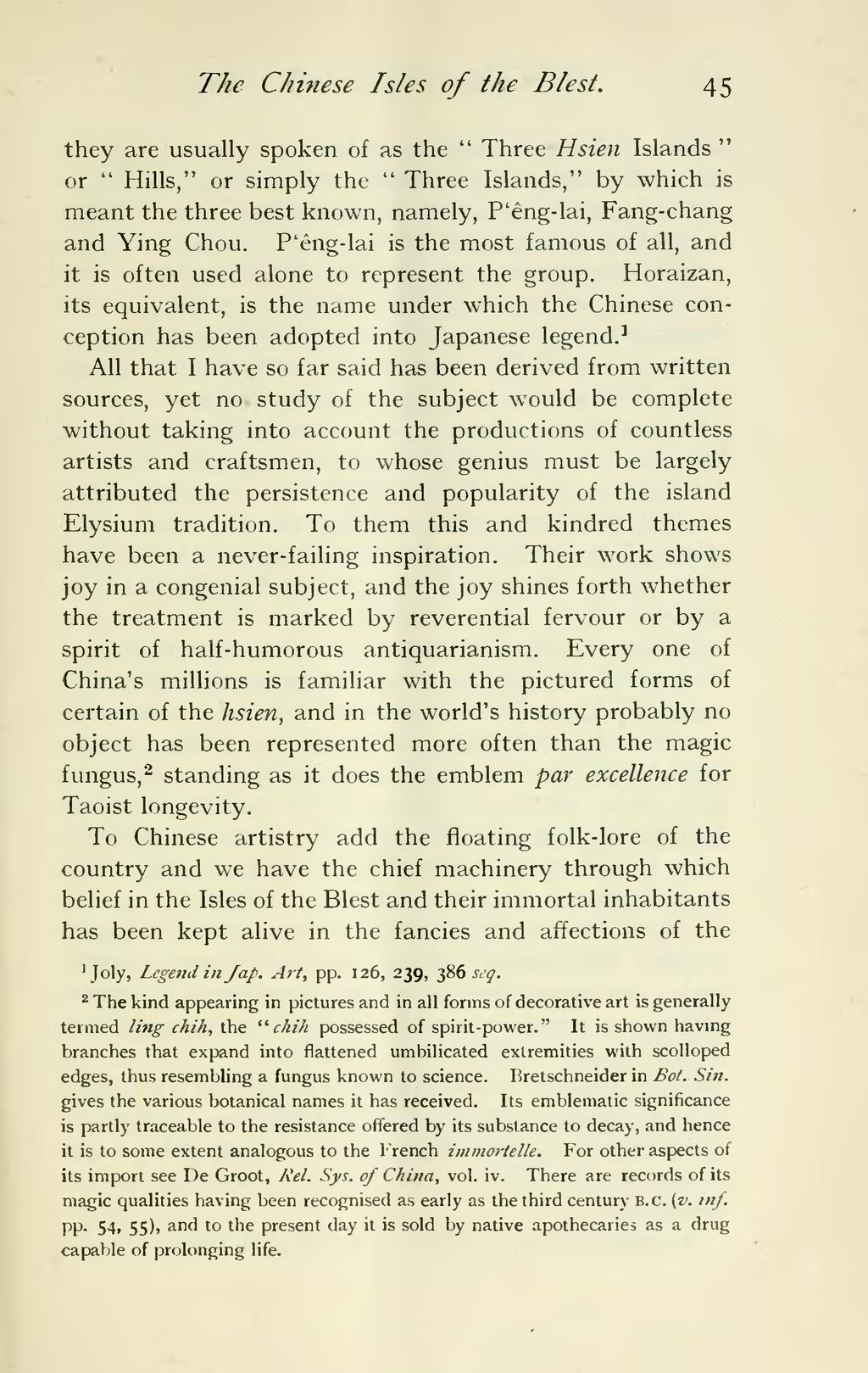they are usually spoken of as the "Three Hsien Islands" or "Hills," or simply the "Three Islands," by which is meant the three best known, namely, P‘êng-lai, Fang-chang and Ying Chou. P‘êng-lai is the most famous of all, and it is often used alone to represent the group. Horaizan, its equivalent, is the name under which the Chinese conception has been adopted into Japanese legend.[1]
All that I have so far said has been derived from written sources, yet no study of the subject would be complete without taking into account the productions of countless artists and craftsmen, to whose genius must be largely attributed the persistence and popularity of the island Elysium tradition. To them this and kindred themes have been a never-failing inspiration. Their work shows joy in a congenial subject, and the joy shines forth whether the treatment is marked by reverential fervour or by a spirit of half-humorous antiquarianism. Every one of China's millions is familiar with the pictured forms of certain of the hsien, and in the world's history probably no object has been represented more often than the magic fungus,[2] standing as it does the emblem par excellence for Taoist longevity.
To Chinese artistry add the floating folk-lore of the country and we have the chief machinery through which belief in the Isles of the Blest and their immortal inhabitants has been kept alive in the fancies and affections of the
- ↑ Joly, Legend in Jap. Art, pp. 126, 239, 386 et seq.
- ↑ The kind appearing in pictures and in all forms of decorative art is generally termed ling chih, the "chih possessed of spirit-power." It is shown having branches that expand into flattened umbilicated extremities with scolloped edges, thus resembling a fungus known to science. Bretschneider in Bot. Sin. gives the various botanical names it has received. Its emblematic significance is partly traceable to the resistance offered by its substance to decay, and hence it is to some extent analogous to the French immortelle. For other aspects of its import see De Groot, Rel. Sys. of China, vol. iv. There are records of its magic qualities having been recognised as early as the third century B.C. (v. inf. pp. 54, 55), and to the present day it is sold by native apothecaries as a drug capable of prolonging life.
